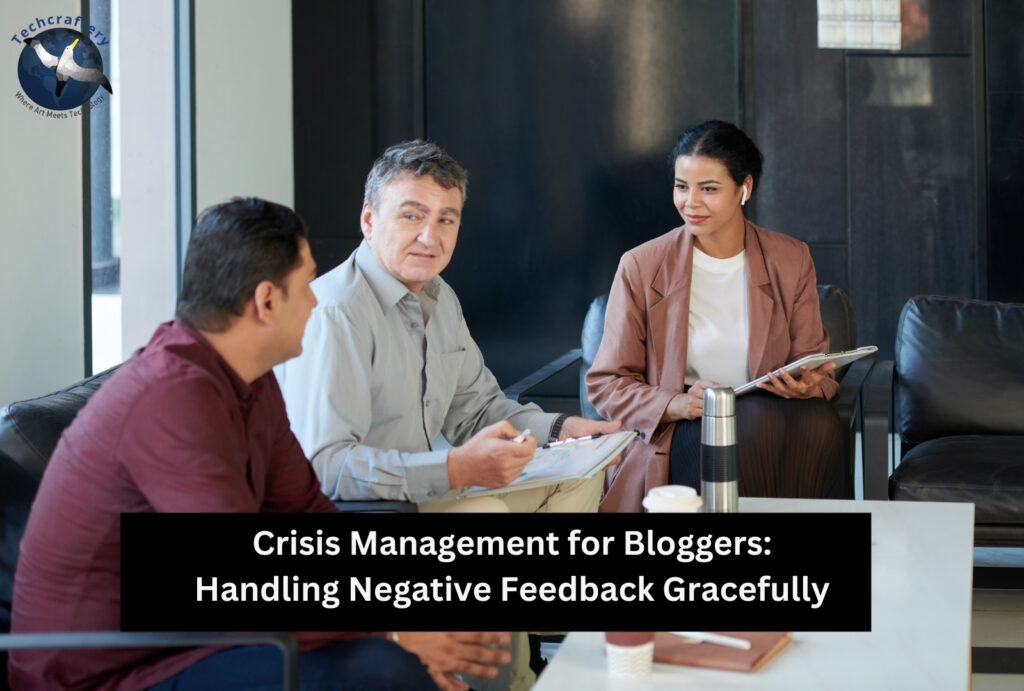Crisis Management for Bloggers: Handling Negative Feedback Gracefully

In the world of blogging, negative feedback is an inevitable part of the journey. Whether it’s a critical comment on a post, an unfriendly review, or backlash on social media, how you handle this feedback can define your reputation and impact your audience’s perception. Crisis management is essential for bloggers who wish to maintain their integrity and continue building a supportive community. Here’s a comprehensive guide to handling negative feedback gracefully.
Understanding Negative Feedback
Negative feedback can stem from various sources. It might be a reader who disagrees with your perspective, a fellow blogger who feels slighted, or even trolls who seek to provoke. Understanding the nature of the feedback is crucial. Not all criticism is valid, but some can offer constructive insights that can help you grow as a blogger. Differentiating between constructive criticism and unhelpful negativity is the first step in effective crisis management.
Types of Negative Feedback
- Constructive Criticism: Offers specific suggestions for improvement. It’s usually well-intentioned and can help you refine your content.
- Destructive Criticism: Aimed at belittling or attacking your character rather than your content. This type often lacks substance and is usually not worth your energy.
- Trolling: Comes from individuals who intentionally provoke or upset you. Engaging with trolls often only escalates the situation.
- Disagreement: Some feedback arises simply from differing opinions. This can spark healthy discussions if approached correctly.
The Emotional Toll
Receiving negative feedback can be emotionally draining. It’s natural to feel hurt or defensive. However, allowing these emotions to dictate your response can lead to rash decisions. Take a moment to breathe and process your feelings before reacting. Remember, your worth as a blogger is not defined by one negative comment.
Steps to Handle Negative Feedback Gracefully
1. Stay Calm and Objective
When faced with criticism, it’s essential to maintain a level head. Responding emotionally can lead to regrettable actions. Instead, take a step back and assess the feedback objectively. Ask yourself:
- Is there any truth in this feedback?
- Can I learn something from it?
- Is this person genuinely trying to help, or are they just venting?
2. Acknowledge the Feedback
If the feedback is valid, acknowledge it openly. This demonstrates your willingness to improve and shows your audience that you value their opinions. A simple statement like, “Thank you for your feedback; I appreciate your perspective,” can go a long way in diffusing tension.
3. Respond Thoughtfully
Craft a thoughtful response, especially to constructive criticism. If you feel the feedback is unwarranted, it’s still vital to respond respectfully. Acknowledge their viewpoint without becoming defensive. For example, you could say, “I see where you’re coming from, but I had a different intention with this post.”
4. Know When to Engage or Disengage
Engaging with feedback can foster community, but it’s crucial to recognize when to disengage. If the discussion becomes hostile or toxic, it’s best to step away. Don’t feed into negativity, as it can spiral out of control. Sometimes, ignoring trolls or overly negative commenters is the best course of action.
5. Turn Criticism into Content
Negative feedback can serve as inspiration for future posts. If you encounter common concerns from your audience, consider addressing them in a new blog entry. This not only demonstrates your willingness to improve but also fosters a sense of community engagement. Your audience will appreciate your openness to discussion.
6. Reflect and Learn
Take time to reflect on the feedback you’ve received. What can you learn from it? Are there patterns in the criticism that you should address? This introspection can help you grow as a blogger and enhance your content quality over time.
7. Maintain Transparency
If negative feedback leads to significant changes in your blog or approach, communicate this to your audience. Transparency builds trust. Letting your readers know you’re listening and making adjustments shows that you care about their experience.
Building a Supportive Community
Creating a positive blogging environment can significantly reduce the impact of negative feedback. Engage with your audience by fostering a sense of community through:
- Encouraging Dialogue: Prompt your readers to share their thoughts and opinions in a constructive manner.
- Celebrating Positivity: Highlight positive feedback and testimonials. This helps create a balance in your community.
- Setting Guidelines: Establish clear commenting guidelines to promote respectful discussions. Make it clear that while differing opinions are welcome, negativity and personal attacks are not tolerated.
Self-Care and Resilience
Crisis management isn’t just about responding to feedback; it’s also about taking care of yourself. Blogging can be a rollercoaster of emotions, and prioritizing your mental health is crucial. Engage in self-care activities that help you recharge. Whether it’s taking breaks, spending time with loved ones, or pursuing hobbies outside of blogging, finding balance will enhance your resilience against negativity.










